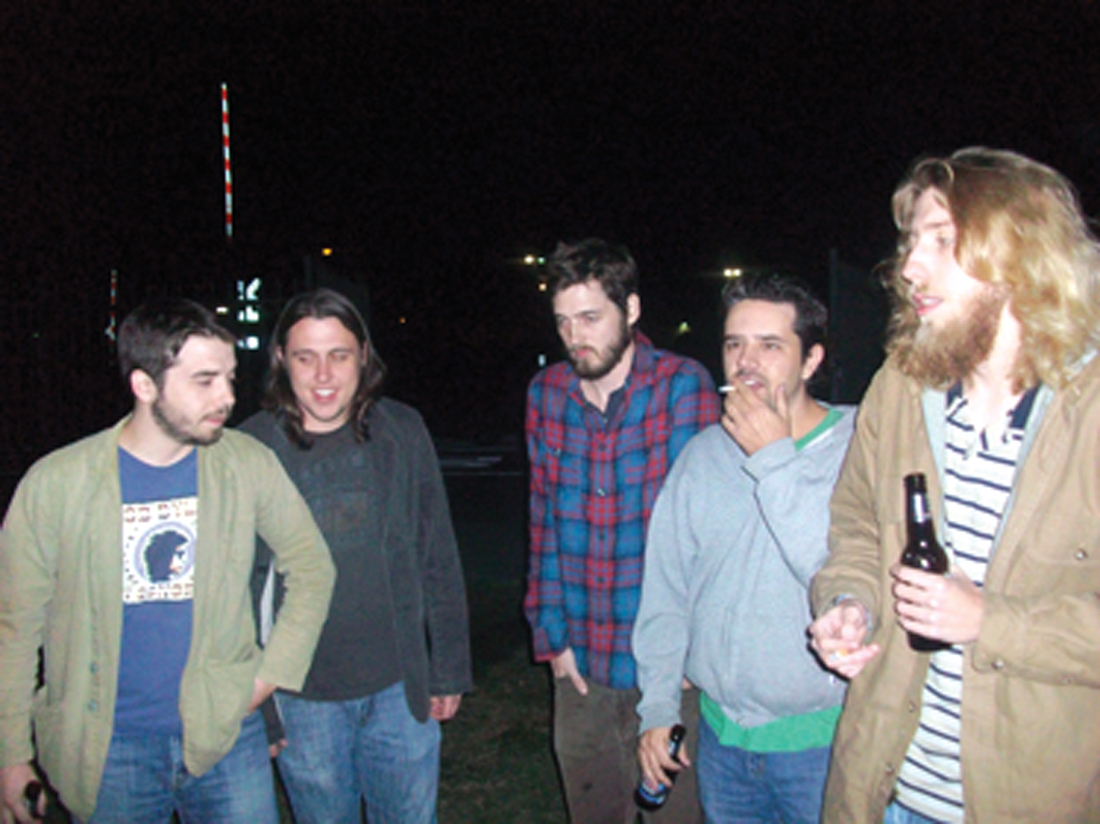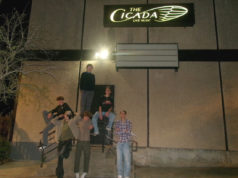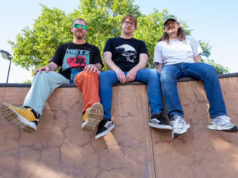Some people think we should cover more than Fort Worth. Ha! Yeah, right. There are, like, a million bands here. And half of them are good. We’d have to hire 12 more writers to do any justice to this scene alone, and, well, we’re not hiring. In other words, new recordings are always slipping past us. Case in point: these three relatively “old” releases. –– Anthony Mariani
Igneous Grimm’s Everything Is the Same Thing
While Igneous Grimm’s latest still reflects the kind of melodies and chord arrangements you’d find in early-’70s psychedelic rock, the 11 tracks on Everything Is the Same Thing have a distinctively modern sheen. Maybe it’s the synth squiggles curling along beside the guitar solos, or maybe it’s the nature of digital recording. The songs have the sort of classic-rock DNA and soaring hooks you’d find in a Band of Horses album, and in terms of the reverberating sonics, navel-gazing lyrics, and the rootsy guitar work, Everything bears many of the signifiers you’d find in your favorite ACL headliners.
And yet, it’s entirely its own record. “Sights and Sounds” might make you think of a band like BOH, but its lazy half-time swing and playful, Muppets-like melody gives the material an original gleam. Better still, the record swims across a sea of moods. For every sunny hook and balmy, countrified jam (dig the slide guitar on “Things that Numb Us Down”), there’s the foreboding atmospherics of songs like “What Were You Saying” and the rainy-day piano and wistful strings coloring “Lazy Monday.”
Everything Is the Same Thing is an ambitiously written, multi-textured album that deserves 50 minutes of your undivided attention. –– Steve Steward
MidWay’s FunEmployment
When did TCU become a rap factory? Around campus, you’re more likely to hear Pat Green blaring out of some frat bro’s Jeep than you are serious hip-hop. Still, the university has produced a few heavyweights, including Dru B. Shinin’ and A-Roy. The next wave of hip-hoppin’ frogs is Lou Charle$ and Kev Nolan. After honing their skills freestyling in dorm rooms, the two formed MidWay and released their first full-length album, FunEmployment Vol. 1, in October.
Filled with crisp, mellow beats, funky basslines, and catchy synth riffs, FunEmployment is the kind of party-starter you could throw on and turn up and then sit back and watch the dance floor fill. But there’s more to Charle$ and Nolan than all-night ragers. Throughout the album, the lyrics show some depth and welcome self-awareness. The opening track, “One Love,” is a laidback head-bobber about balancing youthful abandon and adulthood: “Had options, but opted for music / Standing at the crossroads / I’m my own Judas / Up late fighting myself until the sun-up.”
Catchiness abounds. “Up and Away,” an uptempo synth-driven anthem reminiscent of early OutKast, is brought together by a monster hook that belongs in a beer commercial: “I’m so up, up, and away / I’m feeling good, I’m feeling great / Living that high life, never coming down / Walking on clouds, feet ain’t touchin’ the ground.”
Both rappers exhibit decent flow, using inter-line rhyme schemes and varying their deliveries on a whim but never at the expense of a memorable hook, and there are bunches of hooks.
If FunEmployment has a flaw it’s an overdependence on rap clichés. Out of the mouths of two college-age kids, opinions about money and fame tend to fall a little flat (“Don’t Love ’Em,” “Biggest Fan”).
But there’s a lot of brainpower at work here. For the most part FunEmployment is a tight, smart, sunshiny glimpse into the minds of the next generation of great TCU rappers. –– Eric Griffey
Darrin Kobetich’s Sidetracked: A Soundtrack for an Imaginary Motion Picture
Working with Hip Pocket Theatre over the past couple of years has Fort Worth guitarist Darrin Kobetich thinking like a storyteller. If you know him only as that tough-looking bald guy with the goatee and Long Island accent who jams on Fred’s patio every now and then, you don’t know Darrin. Former metalhead and longtime solo instrumentalist, Kobetich has grown (unwittingly or not) into a full-fledged composer. No kidding.
Mastered by Britt Robisheaux (The Theater Fire, Drug Mountain, Most Efficient Women) and produced by Kobetich at his home studio, Sidetracked: A Soundtrack for an Imaginary Motion Picture is as sweeping as the title implies. Though Kobetich’s guitar is the focal point, that’s not all there is. From a bubbly intro of colorful vibraphone notes, “Creeper” slinks into a semi-dissonant –– and creepy –– dirge underlined by carnivalesque accordion and yawning sitar. (This is the part in the movie when the hero discovers some unsettling clues.) The enormously loud “Giant Behemoth” stomps and lurches like a Slayer jam session, all grinding, ragged, roaring electric guitars and thunderous, crashing drumming, and “Counter Culture Tribal Dance Theme” motors forward on percolating hand drums and a butterfly of a flute riff. (This is the part of the movie when the hero realizes he’s been drugged while at a heavy-metal concert. He frantically stumbles outside but only to be caught in a wash of Hare Krishnas who may or may not be working for the CIA.)
The album’s general tone is mournfulness. Melancholia is especially pronounced in “Banjer in the Bayou,” two short but powerful minutes of soulful twang that resonate deeply. (This is the part of the movie when the hero wakes up in the wilds of Louisiana and realizes he may never see his family again.)
As vibrant as Sidetracked is, with Kobetich overdubbing all of the non-guitar parts, the album is at its core a strings record. And Kobetich is in fine form, whether sitting back and strumming rocking riffs (“Winging It,” “The August Moon,” “The Man Who Came from Wales”) or leaning over and plucking out pure crystal. “The Gift That Came Here” is simply a small, ebullient finger-plucked passage that comes and goes like a summer breeze, while the fluttering and bracing “An Air of Pall” includes bits of flamenco and blues.
This is the part of the movie when the hero is asked to create a soundtrack for a major motion picture. –– A.M.












